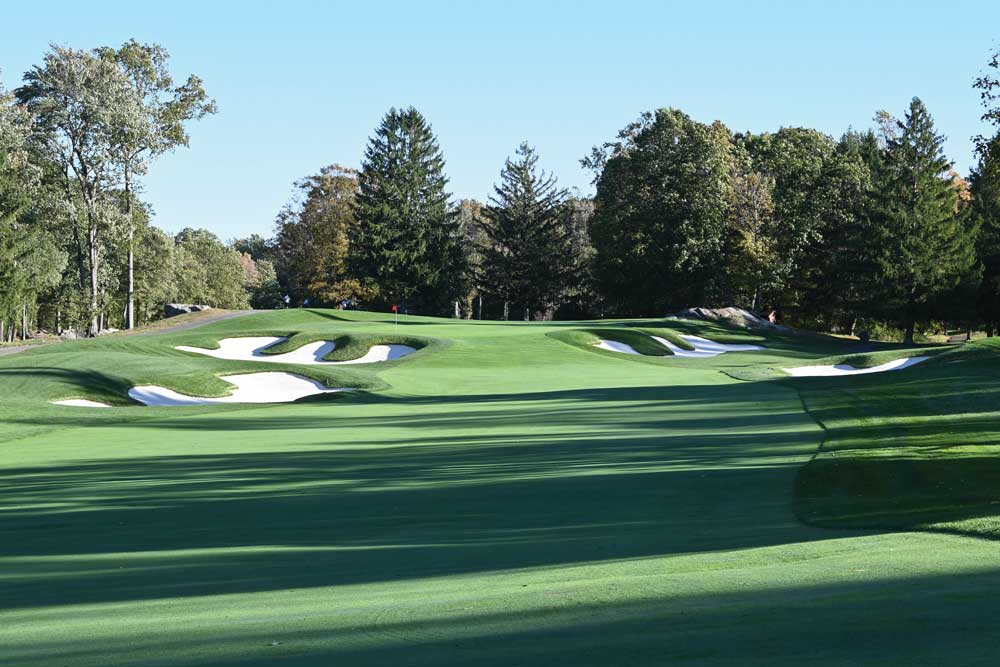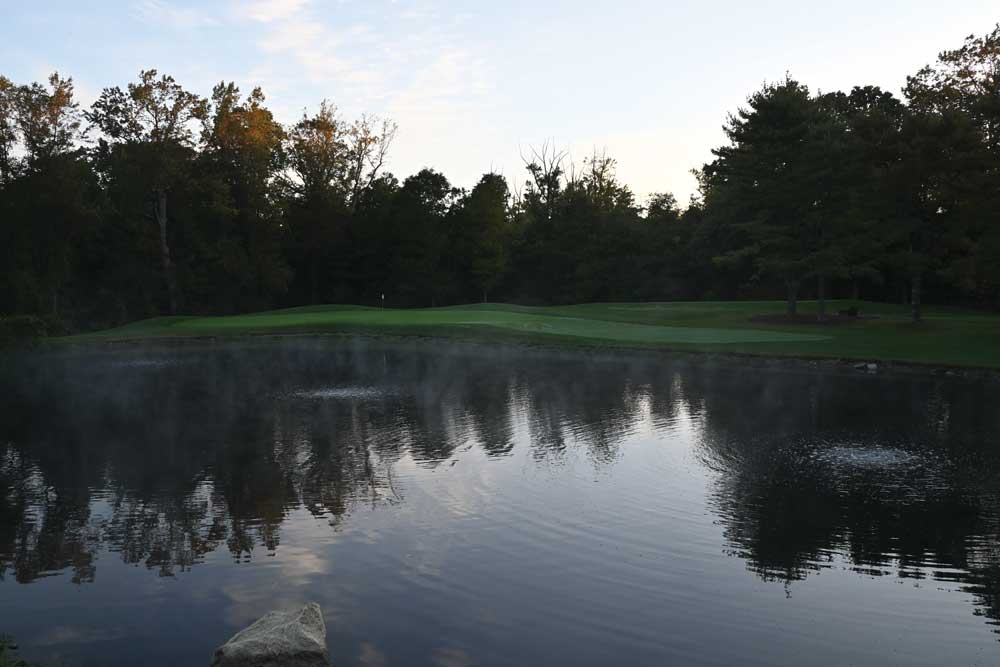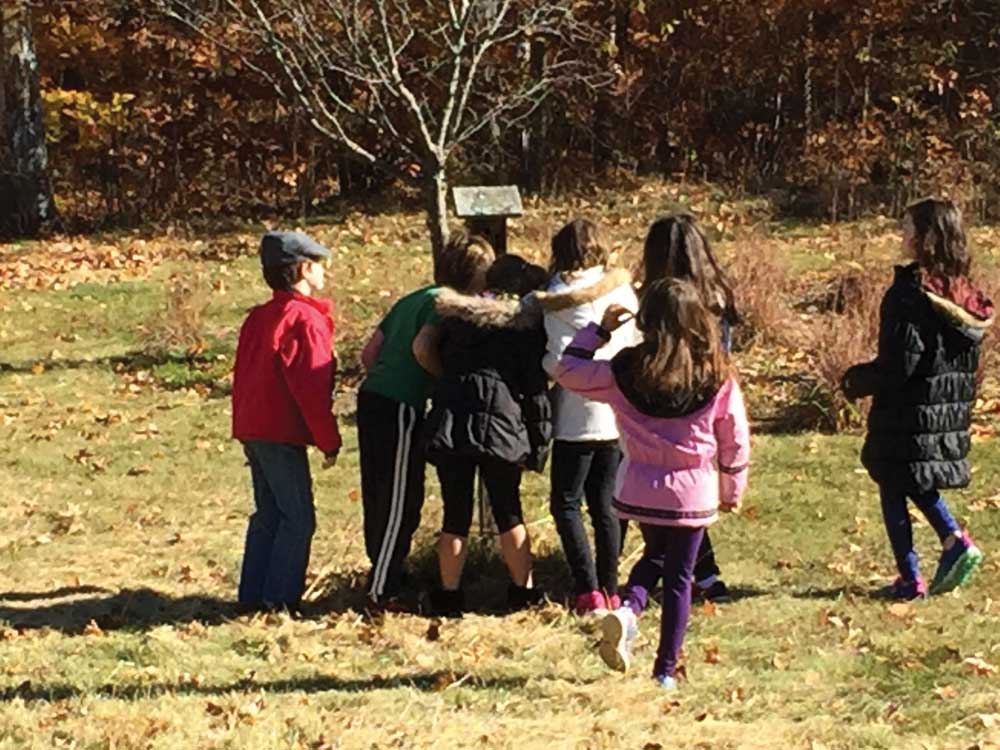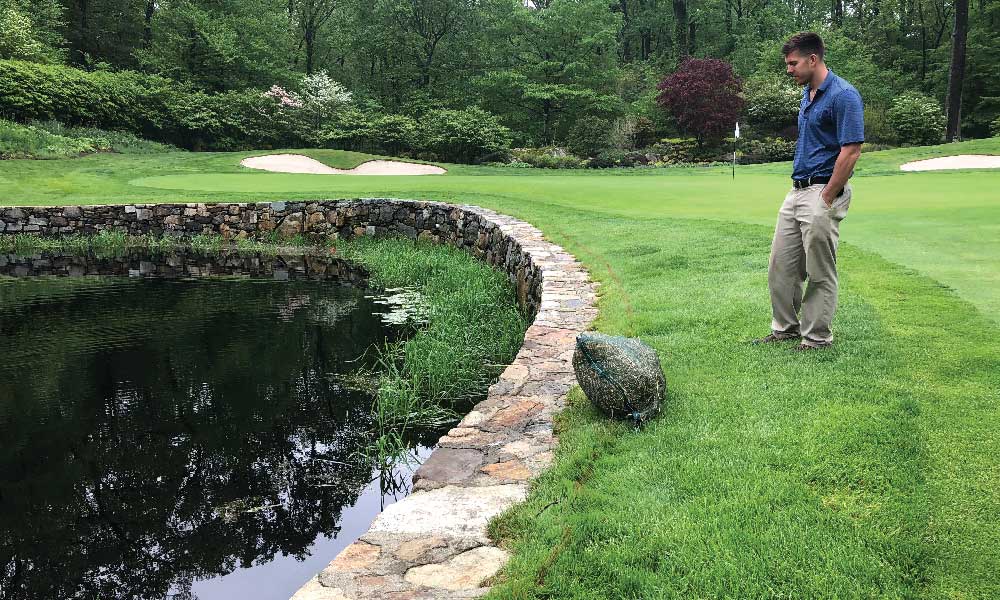The folks at Audubon International speak proudly about the accomplishments of all the superintendents who achieve Audubon certification at their facilities. Given how proud Audubon International is of each superintendent, when the Director of Environmental Programs for Golf, Frank LaVardera, identifies Jim Pavonetti CGCS as exemplary, you know Jim is a special steward of the environment.
Along with Audubon International’s praise, Jim is also a four-time winner of the Golf Digest Environmental Leaders in Golf Metropolitan Chapter Award and the winner of the Golf Digest Environmental Leaders in Golf Merit Award.
For the past thirteen years, Jim has been the course superintendent at Fairview Country Club, a private club in Greenwich, Connecticut. In this picturesque setting, Jim keeps playing conditions optimal, club members happy and course maintenance practices environmentally green.

He Knew from the Start
Soon after becoming superintendent at Fairview, Jim began making plans to pursue Audubon International certification for the course. Motivated to have an environmentally safe and responsible facility, members advocated for it. Jim, who had already worked through the process during his five years as superintendent at The Edison Club in Rexford, New York, was committed to the plan.
“I began working through the sections of the program to earn course certification. It had taken about a year for me to do an evaluation, survey and the preparations to start the process. Although we did a number of projects toward our objective of Audubon Cooperative Sanctuary Program (ACSP) for Golf certification, none makes me prouder than what we accomplished with our water quality management.”
Hands-On Irrigation Control
An onsite sewage treatment plant serves the country club. The reuse water from the treatment process is piped into a series of five shallow ponds for irrigation use on the golf course. With the ponds as the only irrigation source, water conservation at Fairview is especially important.
In 2012, Fairview management installed a new irrigation system, purposefully designed to help conserve water through user-controlled irrigation practices. “Four hundred quick-couplers allow for easy hand-watering,” Jim explained. “And we have adjustable part-circles on all areas of the property. We have dialed in the part-circles by changing nozzles. We audit the system in the spring during startup and again in the summer, checking arcs and nozzle spacing to ensure that we are accurately applying water only where needed.”
Other measures implemented for more efficient water use include adding drought-tolerant turf where appropriate, use of handheld sensors, permanent underground sensors installed at every tee, green, and fairway, and the use of infrared cameras designed to evaluate irrigation needs.
Black is the New Green
To control inevitable seasonal algae blooms in the five ponds, Jim opted to take a giant step away from chemical use. Each year, the course’s management had been spending $20,000 to $30,000 on chemicals to control the problem. In 2011, working with The Pond and Lake Connection, Aqua Master air diffusers were installed in all five ponds to run nightly.
A weekly application of black dye substantially reduces the UV penetration in the water by blocking the light algae needs to grow. Producing a reflective or mirror-like look to the water, black dye is safe for fish, frogs, and other pond dwellers. In addition to the algae-inhibiting benefits of the black dye, Jim added fish traps filled with barley straw at every entrance point to the ponds. Water coming into the pond flows through the barley straw “filters.” The straw, which must be replaced every eight weeks, is believed to release beneficial bacteria that inhibit the growth of algae.

Not only is Jim’s three-pronged approach of aeration, black dye, and barley straw environmentally green, but also it’s highly effective. Since implementing this strategy, the use of chemicals to control algae in the Fairview ponds has decreased by 90 to 100 percent. The $20,000 previously spent on chemicals to control algae has been replaced by a nominal budget for dye and straw.
The Welcome Mat for Wildlife
In addition to conserving water and dramatically reducing chemical use, Jim has furthered or initiated many other environmentally responsible projects, including adding bluebird boxes in each of the past 12 years, adding a wood duck nesting box, expanding naturalized areas to provide cover and habitat for wildlife, adding bat boxes, removing invasive plant species, adding native plant species, being an early adopter in the Monarchs in the Rough program and numerous other efforts aimed at protecting and preserving the natural environment.
However, sharing is equally as important as doing. Jim and his crew proactively share insights about their projects with club members, area school children, and the local community.

Making it Easy: If Only Your Golf Course Had a Carriage House
The Fairview Country Club property includes acreage that previously belonged to St. Luke’s Convalescent Hospital. A stately brick structure that years ago housed patients seeking to rehab in the scenic coastal countryside now houses the course’s upscale clubhouse, guest rooms, and other club amenities.
The course property includes a historic carriage house that once provided garage space for ambulances and housing for nurses. Now converted to accommodate seasonal maintenance workers, the carriage house has multiple dorm-style sleeping spaces upstairs with a first-floor kitchen and lounge area. In a region of the U.S. where real estate prices are at a premium, temporary housing and rental costs can price short-term maintenance crew members out of the market. Jim recognizes that it is an incredible boon to be able to provide on-site housing as part of his compensation to some members of his crew.
“I can have an after-hours issue come up, say a tree branch has fallen,” said Jim, “and I just walk into the lounge and ask, ‘Who wants to earn a couple of hours of overtime?’ Immediately, I have a crew, ready to go to work.”
Jim also inherited a system that has insulated him from the labor challenges many golf course superintendents face. Every year, his seasonal crew needs are filled by workers from two adjoining communities in Mexico. Most of the permanent resident or dual citizenship workers in this group return year after year. If there is a change in workers, the group fills it themselves adding a family member or friend to the crew. Before Jim even gets to the interview process with the new crewmember, other workers have already shown him the ropes.
“By providing housing on the property and some meals, we are giving these workers a desirable job that allows them to work seasonally and then return to their homes in Mexico and enjoy months of free time with their families. I am lucky to have a core group of workers and never a struggle to fill the crew. My seasoned team and my exceptional assistant superintendent, Shawn Houseknecht, make my job a lot easier.”
Encouragement for Other Superintendents
In closing, Jim shared these motivational thoughts for other superintendents. “ACSP certification is not something you achieve and then sit back. With everything we are doing, we’re still perfecting things. But you shouldn’t hesitate to take the steps to get your course ACSP certified.
“It’s really not too hard and it certainly doesn’t come at a great expense. You just start the process and work through it one category at a time. The results are cost savings, positive press, and a good environment.”
Linda Parker has been writing professionally since the 1980s. With clients in finance, sports, technology, change enablement, resorts and nonprofit global initiatives, Linda helps organizations communicate their stories in meaningful ways to the people they most want to reach. She has authored, ghostwritten or contributed to more than a dozen nonfiction books. Linda is a member of the Authors Guild and the Golf Writers Association of America. You can connect with her at linda@glindacreative.com



























